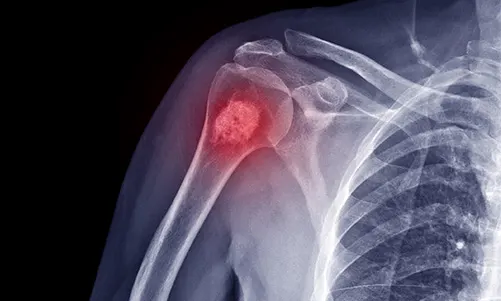An aneurysmal bone cyst (ABC) is a benign (non-cancerous) tumour that develops within the bones. These tumours consist of tiny cysts with blood. ABC is more common in children and young adults under the age of 20. The condition can cause pain that may worsen quickly, swelling around the lump, numbness, muscle weakness, and paralysis in severe cases.
Consult with the best orthopaedics for aneurysmal bone cyst treatment at the CK Birla Hospital.

Aneurysmal bone cysts can affect any bone in the body, but most commonly develop in the thigh bone, shin bone, upper arm bone, vertebrae, and bones in the pelvis. The exact cause of ABC is unknown, though it is associated with issues related to blood vessels in the bones and variations in the genes that control how the cells grow and divide.
As of now, there are no known preventive measures against aneurysmal bone cysts given their exact cause is still unknown. However, early detection and prompt treatment can help minimise complications.
An orthopedist can help diagnose aneurysmal bone cysts through a combination of physical examination and imaging tests. The doctor may examine the noticeable lumps on the bone and ask about the symptoms being experienced.
Get imaging tests like X-ray, MRI or CT scan as advised by the doctor.
Share complete medical history, including previous bone conditions.
Stop blood thinners or certain medications as per doctor’s advice.
Follow fasting instructions if surgery is planned under general anaesthesia.
Arrange for a caregiver or attendant to assist post-surgery.
Take prescribed pain medication and antibiotics on time.
Avoid weight-bearing or physical strain on the treated area.
Attend regular follow-ups for monitoring bone healing.
Keep the surgical site clean and dry; watch for signs of infection.
Start physiotherapy only when recommended by your doctor.
Recovery after aneurysmal bone cyst treatment typically takes a few weeks to a few months, depending on the size and location of the cyst. Most patients regain normal function with rest, physiotherapy, and regular follow-ups to monitor bone healing and prevent recurrence.
The difference between aneurysmal bone cysts and a giant cell tumour can be ascertained by their radiographic appearance, growth patterns, and microscopic features.
The exact cause of the aneurysmal bone cyst is unknown.